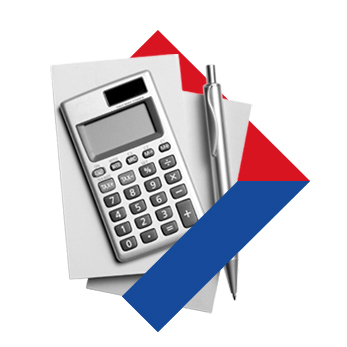Suggested Search
If you’re a rookie investor, you’re in the right place. Here are the basics so you can start putting together an investment plan. We’ve also taken the mystery out of how and where you can invest – and provided a five-step plan to get you on the way to achieving your dreams.
Setting your financial goals – the most important part of your investment journey
The earlier you invest, the more time your money has to grow
Find out where your finances stand today
Know the risks involved in each type of investment – and how much risk you’re prepared to take
Different investments have different risk and return profiles
When should I start investing?
You can start investing as early as your budget allows. Even if you start small, it can still pay off in the long run.
In general, the earlier you begin investing the better. That way, you give your investments more time to grow, thanks to the magic of compounding. With compounding, you earn money on your original investment and on any income you’ve received. Over time, that can really add up.
Before you start your investment journey
Taking the first step on your investment journey may feel daunting, so it’s wise to start with a solid plan. This can be your best tool on your investment journey. It will act as a guide towards your long-term goal and help you avoid distractions and traps along the way.
Here are a few things to do before you get started.
Understand your financial situation
The kind of financial future you’ll have depends a lot on what you’re doing today. So, start with a clear view of your budget right now. Our budget tool can give you a snapshot of where you stand financially today. That will help you make better decisions about your finances now, helping you meet your future goals.
Understand risk
Investments always come with some level of risk. In general, that’s the possibility of a negative return – in other words, having less money than you started with.
Investments are sorted into different categories or options, depending on their level of risk. Cash and fixed interest investments are considered lower risk, for example, while property and shares tend to be higher risk.
In general, the higher the level of risk an investment has, the higher its return could potentially be. But equally, there’s also the risk of higher losses. So, before you invest in anything, you should always check the risks to see if the option suits your needs.
Your age is another important factor as it affects your ability to stay invested and recover from market downturns. If you’re young, you may be able to ride out the short-term ups and downs of the market and take advantage of its higher long-term growth potential. If you’re older and need to access your money sooner, it may work better to invest in lower-risk options such as cash or fixed interest and not risk losing a chunk of your savings to a market downturn.

Get to know your risk appetite
Understand your investment options: asset types
Investments are organised into asset types, which are groups of investments that have similar features. Here’s a quick overview to get you started, but if you want to know more, see our page on investment options.
- Cash: As implied by the name, cash means investing in currency – usually by putting money into bank accounts, term deposits or similar. It’s liquid – which means you can get hold of it quickly if you need money – and it’s low risk. Growth potential is generally the lowest as well.
- Term deposits: This is money invested for a set period of time, for example, six months or a year. The interest rate is generally better than on a cash account. But term deposits aren’t as liquid as cash. In other words, if you want to take the money out early, you’ll have to pay a fee. Term deposits are generally low risk and provide a comparatively low but stable return.
- Fixed interest investments: Fixed interest investments are essentially loans issued by companies, governments or financial institutions to raise money. They come with a set rate of return. It’s usually more than cash but lower than higher risk options like shares.
- Property: Investors can either buy a property themselves, or buy a stake in one or more properties through a property security owned by a company or trust. As well as houses or apartments, property includes factories, warehouses, office spaces, shops and shopping centres. Investors earn income from rent, and they can also make a capital gain if they sell the property for more than they paid for it. Property may also be a tax-effective investment.
- Infrastructure: Infrastructure means physical assets, such as public transport, toll roads or public housing. While these investments require a lot of capital to get started, they often have low ongoing operating costs and provide a reasonably stable return.
- Shares: Shares allow you to own a part of a company. They are generally bought and sold on a public stock exchange. While they’re considered higher-risk, they tend to outperform other asset types over time.
- Alternative funds: Alternatives are any other investments that fall outside the traditional asset classes of shares, cash, property, infrastructure, cash or fixed interest. They include a diverse mix of investments including hedge funds, commodities, private equity, art, cryptocurrency and venture capital. Because they can be high risk and complex, they’re usually the domain of institutional or high net worth investors.
Creating an investment plan: Five simple steps
1. Set goals
To set clear goals with achievable targets, ask yourself what’s important to you and why you’re investing. For example, it might be to:
- save for your retirement
- earn a regular income
- manage your money tax-effectively
- save for a big-ticket item such as a house or overseas trip
- leave a legacy for your children
- park some cash for a short time.
Think about your circumstances. How much money do you have to invest? How long you plan to invest for? What do you want to achieve at the end?
Write down your goal. For example, ‘I want to retire at 60 with an after-tax yearly income of $50,000 which will last at least 25 years’ is a good goal because it states a measurable, specific target with a time frame.
2. Decide your risk appetite
Risk is the chance of losing money you’ve invested or it earning less than expected. Usually, the higher the risk, the higher the potential return. Your risk appetite simply means how much risk you’re prepared to take on to achieve your goals. By determining your risk appetite you’ll be able to choose investments that meet your needs over a long period of time.
Find out what kind of investor you are with our Risk Profiler Tool.
3. Decide how much to invest
How much you invest depends on your current financial situation as well as your investment goal.
It’s usually helpful to work backwards from your goal: take the final amount, the length of time between now and then, and calculate how much money that is per week or month. Then, taking into account potential returns, the idea is that you’ll need to invest at least that much to get to your desired end point.
Our retirement calculator can help you set goals and give you different options to get there.
4. Choose how to invest
Which asset types are right for you? How much money you have available to invest will affect your choice, as will your risk appetite and investment timeframe.
This step is often called building or structuring your investment portfolio. It’s also important to make sure your portfolio is diversified. Diversification helps reduce your investment portfolio's risk if the value of one of your investments drops.
To diversify your portfolio, consider investing in different asset types, industries, or geographic regions. For example, if you’re investing in shares, you could consider also holding other investments in cash or fixed interest. If you want to invest all in shares, you could consider investing across a range of sectors, companies and geographies.
5. Decide if you need help from a financial adviser
It can be worthwhile getting an expert opinion before you start investing. A financial adviser can help you determine your goals, confirm your risk appetite, and set up and manage a personalised investment portfolio. If you don’t have an adviser, you can locate one near you using our find an adviser tool.

Retirement Calculator
Find out how much money you’ll need for the lifestyle you want when you retire.
Unleash the investor inside you
Investing through super
If you have a super account, you’re already an investor. The money in your super account is invested into a diversified mix of asset types to help grow your retirement savings. You can choose how your account is invested by changing your fund options.
Remember, your super balance will naturally grow or shrink with markets and changing how you’re invested might not always be the best strategy. You should treat your super like any other investment portfolio and be very careful when making changes.
You can also top up your super by making extra contributions. This lets you invest more money through your super and potentially leave you better off at retirement.
What’s next?

Investing made simple
Learn everything you need to know to plan and start your investment journey.


Investment glossary
Get your head around common financial and investment terms with our A-Z jargon buster.
Unleash in ways you never thought possible
Get in touch
Get in touch with us online or call us
8:30am to 6pm AEST Monday to Friday.
Find a financial adviser
Use our tool to find professional financial advice,
local to you.
Download mobile app
Track your balance and see your
transactions history from anywhere.
Information on this webpage is provided by Avanteos Investments Limited ABN 20 096 259 979, AFSL 245531 and Colonial First State Investments Limited ABN 98 002 348 352, AFSL 232468. It may include general advice but does not consider your individual objectives, financial situation, needs or tax circumstances. You can find the target market determinations (TMD) for our financial products at www.cfs.com.au/tmd, which include a description of who a financial product might suit. You should read the Financial Services Guide (FSG) available online for information about our services.
